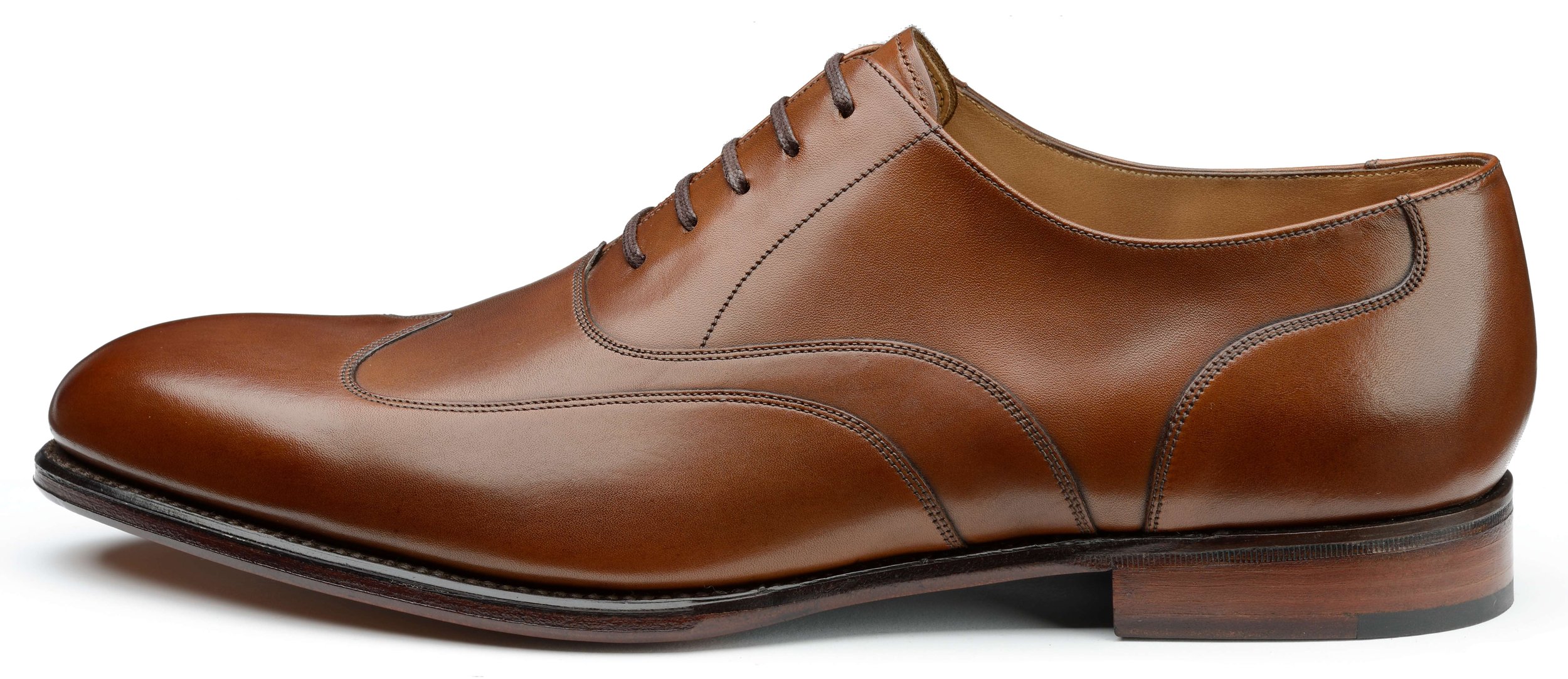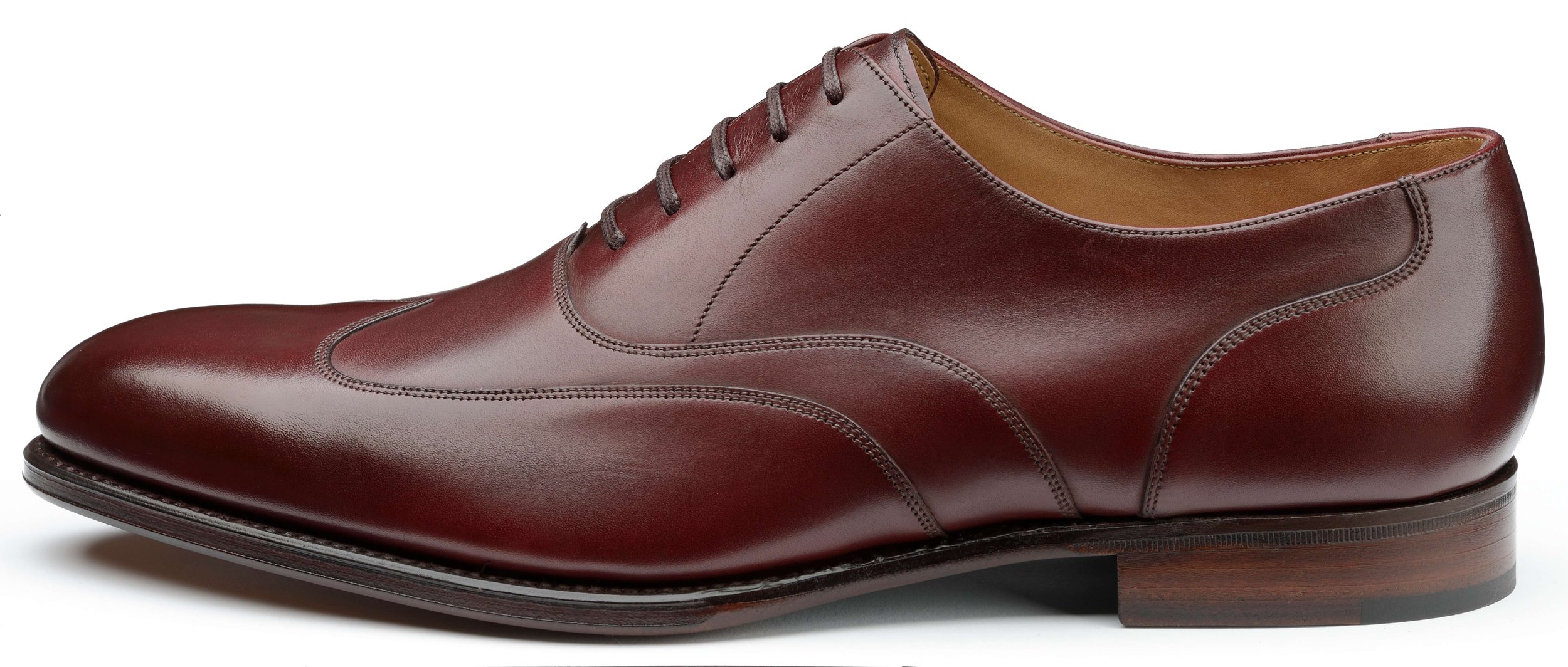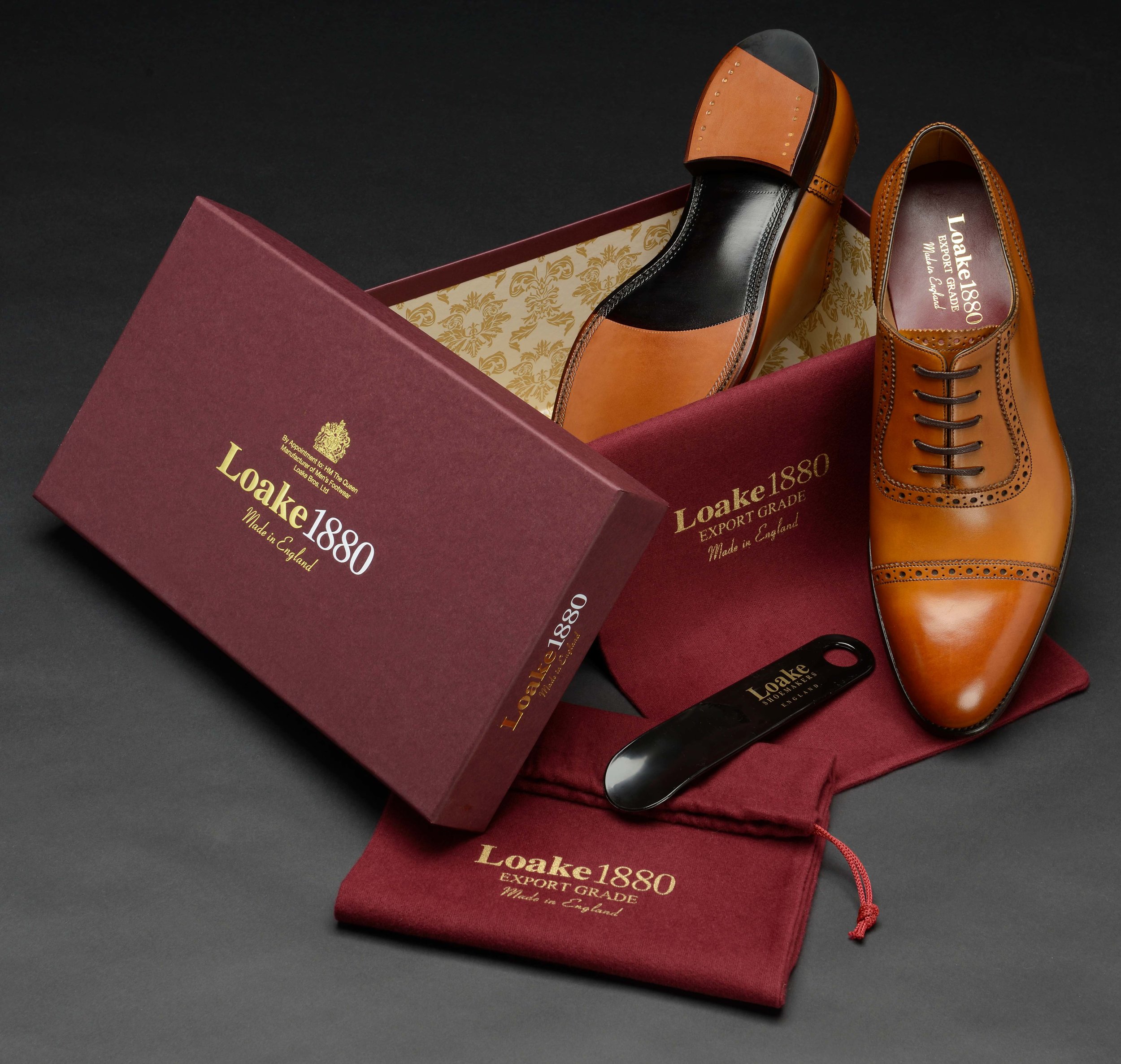To celebrate the launch of Loake's exclusive premium range 1880 Export Grade, emulating the way the company first manufactured its fine, handmade shoes more than 130 years ago, Ernest explores a history of the formal shoe.
It is a fact universally acknowledged that no English gentleman's wardrobe is complete without a pair of handcrafted formal shoes from one of the country's traditional shoemakers. Northamptonshire being the spiritual home of the Goodyear welted formal shoe it seemed rather fitting that we explored its history with our friends at Loake.
Loake has been making fine footwear for five generations and their new range reflects a celebration of the styles and elegant understated designs for which they have become known. Loake's latest limited edition 1880 Export Grade range, sold exclusively offline, offers both Oxford and Derby styles, brogues, semi-brogues, toe-cap and wing-cap designs.
Made by their very best shoemakers, with an unmatched level of precision, all styles in Loake 1880 Export Grade range feature a fitted fiddle-back waist for a more refined and elegant shape. This has the added benefit of providing further arch support whilst feeling lighter and therefore more comfortable in wear. The fitted appearance is complemented by extra fine stitching using a higher number of stitches per inch. Full leather soles are intricately hand-decorated and reveal a hand-painted two-tone stain. The shoes are hand-burnished and finger polished for a deep shine and fitted with premium flat waxed cotton laces.
Buckles and Business
You may have heard your grandfather say ‘never do business with a man in loafers’. The introduction of the lounge suit saw a stark decrease in the number of clothing changes a gentleman was expected to make in one day and with this came a heightened significance on footwear. The loafer was considered a more leisurely shoe as it didn’t require lacing. It could be slipped into, out of formal dress shoes, for increased comfort later in the evening - probably not the best time for negotiating fair business transactions. Neither perhaps was it thought best to wear the buckling Monk shoe. As the name suggests, it was originally a dressier more durable version of the sandals worn by European monks. Rising up the ranks, above the slip on and the buckle, laces were considered the true mark of a gentlemen's formally presented feet.
Going Full Brogue
Originating from footwear worn in the wilder reaches of the Highlands and Ireland, the brogue was initially punched with holes to allow water to drain away after working in or walking through boggy terrain.
Edwardians popularised the modern brogue and the shoe became a favourite of the Royal family at Balmoral. The Duke of Windsor particularly helped to boost the shoe’s reputation as elegant by wearing full brogues to play golf. During the jazz age, the two-tone style of the brogue was worn by the likes of Gene Kelly and Fred Astaire during their dance routines but by the 1930’s brown was the most popular colour for the brogue having become essential wear for the modern gentleman and conventions ‘no brown in town’ and ‘no brown after 5 o’clock’ were being increasingly defied.
Today, the punching on a brogue is purely decorative but winks back to its rags to riches story. Loake encapsulates the essence of this rising history in Warwick, a sleek wing cap ‘austerity’ design brogue, made using Onyx Black, Smoked Teak or Black Cherry calf leathers, for when you're after the elegance of the brogue without that distinctive punch.
Semi-brogue
If the shoe has a ‘wing tip’ cap and detailed punching you're going ‘full brogue’ but the term Oxford is normally used when the shoe has a plain toe-cap. The straight toe-cap and other parts of the shoes can be decorated with some punching but this is known as a ‘semi-brogue’ or ‘London brogue’. The Loake 1880 Export Grade Trinity offers a stylish and versatile semi-brogue shoe in an Oxford design, available in striking Onyx Black, Deep Mahogany, and Burnt Pine calf leathers.
Straight Laced Oxford
Although the term ‘straight laced’ is thought by some historians to come from the ways different people tied their Oxfords, the style has a flavour of rebellion in its origins. It seems likely the classic English dress shoe originated in Scotland and was originally named after Balmoral Castle (‘Balmorals’ or ‘Bals’) and evolved from a popular style of boot with side slits. Over time the side slit shifted into a side lace that then traversed to the top of the foot. This lighter-weight shoe became popular with students at Oxford University, who rebelled against the more traditional boots of the day opting instead for the Oxford’s sleek silhouette. A lace-up shoe, the eyelet facings are stitched underneath the vamp, with a closed lacing system for an altogether formal finish. Loake’s 1880 Export Grade Hanover is a sophisticated Oxford shoe, available in Onyx Black and Smoked Teak calf leathers, with a classic plain toe cap.
The Derby
Worth waiting for, Loake’s 1880 Export Grade full brogue Derby style shoe, Grosvenor, will be available in Spring 2017. A lace-up shoe, the Derby was popular as a sporting and hunting boot in the 1850s. However, by the turn of the 20th century, it had become regarded as appropriate for wear in town. Slightly more casual than the Oxford due to its open lacing system the Derby is still a formal shoe, make no mistake. The source of this shoe may trace back to the 12th Earl of Derby, a man with unconventional feet, who had difficulty getting into his boots. As a result his bookmaker designed an open lace boot style for greater ease. A Derby, with its open front, allows more adjustment by pulling the laces tighter, which means that it will accommodate a wider range of foot shapes while still presenting that polished formal foot look, effortlessly.









